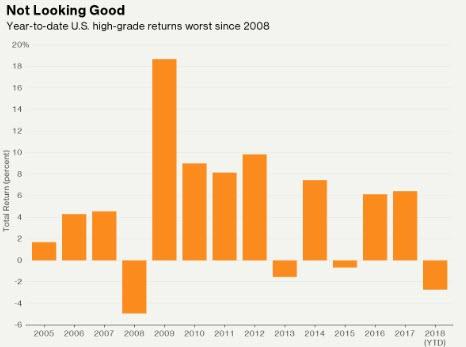Contents:


It can help counterbalance the cost of trading the asset, and any money left behind is considered a profit. When there is an event in the economy such as an earnings announcement or the release of the annual budget, the volatility in the market increases before the announcement is made. The traders usually buy stocks in companies that are about to make earnings. Long-term equity anticipation securities are options contracts with expiration dates that are longer than one year. A call option is a contract that gives the option buyer the right to buy an underlying asset at a specified price within a specific time period. Both options are purchased for the same expiration date and strike price on the same underlying securities.
Assume you are dealing with a stock that is expected to have some very important news to be released in the very near future . You know for a fact that in the past, through back testing, the stock significantly jumped up in volatility and the price spiked up or down as soon as the news was released. A long strangle can profit from the underlying moving either up or down. These are calculated as the cost of the strangle plus the call strike and the cost of the strangle minus the put strike. Keep an eye on the market and keep your strategies updated to ensure the highest profit and least risk.
This approach is a neutral strategy with limited profit potential. A short strangle profits when the price of the underlying stock trades in a narrow range between the breakeven points. The maximum profit is equivalent to the net premium received for writingthe two options, less trading costs. This makes it much more difficult for traders to profit from the move because the price of the straddle will already include mild moves in either direction.

Click the link below and we’ll send you MarketBeat’s list of thirteen stocks that institutional investors are buying up as quickly as they can. If the price of the stock stayed exactly the same, both the put and the call option would be worthless — The investor would have lost $10. If the price fell or rose by $10 or less, the investor would have gotten some money back, but not made a profit. For example, if the stock price fell by $5, the investor could have gotten back $5 using the put option; the call option, on the other hand, would be worth nothing. If the price fell by $10, the investor would have gotten back the entire upfront investment without making any money. Keep in mind that these examples do not take into account commissions and other trading expenses.
This would allow them to buy 100 shares of XYZ Company stock at $35. They could then turn around and sell the stock at $40 per share. By buying both a call option and a put option, the investor is essentially “straddling” the security and attempting to profit no matter which way the underlying security moves. All butterfly options have a maximum possible profit and a maximum possible loss.
The downside, however, is that when you sell an option you expose yourself to unlimited risk. An options straddle involves buying both a call and a put with the same strike price and expiration on the same underlying asset. A short straddle cannot be completely bullish or bearish, as it requires selling of both call and put options. It is therefore a combination of bearish and bullish sentiments on an underlying asset with an objective of making profits. Regular market participants may see traction in the price of straddles whenever a popular stock is expected to announce earnings results. This makes it almost certain that the stock price will move in one direction or another.
Translations of straddle
There are two types of straddles — long straddles and short straddles. Buying straddles work best when the stock market is volatile, and they have the potential to be profitable when the stock price either goes way up or way down. This strategy is not likely to be successful when the market is relatively stable, which can result in the investor losing the money spent on the options . To illustrate, let’s say that Starbucks is currently trading at US$50 per share. To employ the strangle option strategy, a trader enters into two long option positions, one call and one put.
Top Multi-Leg Options Strategies For Advanced Traders – Bankrate.com
Top Multi-Leg Options Strategies For Advanced Traders.
Posted: Thu, 16 Mar 2023 07:00:00 GMT [source]
In our example, the straddle would be profitable as soon as the value of the security went as high as $111 or as low as $89. In both cases, the investor would make a profit of $1 per contract. The further the stock’s price increased or decreased, the more the investor would profit. It is used when the stock price/index is expected to show large movements.
The difficulty occurs in knowing when to use a short or a long straddle. This can only be determined when the market will move counter to the news and when the news will simply add to the momentum of the market’s direction. The rule of thumb when it comes to purchasing options isin-the-money and at-the-money options are more expensive than out-of-the-money options. Each at-the-money option can be worth a few thousand dollars. So while the original intent is to be able to catch the market’s move, the cost to do so may not match the amount at risk. Understanding what taxes must be paid on options is always complicated, and any investor using these strategies needs to be familiar with the laws for reporting gains and losses.
The short straddle introduces a larger risk to the seller, because they could be caught on the wrong side of a trade. However, the benefit is the profit they receive from collecting the option premium. This premium is maximized when the contracts expire at the money or out of the money.
An alternative use of the long straddle strategy might be to capture the anticipated rise in implied volatility which would increase if the demand for these options increases. A short straddle pays off when there is low volatility and the price of the underlying at expiration has not moved much from the straddle’s strike price. The straddle strategy is usually used by a trader when they are not sure which way the price will move. The trades in different directions can compensate for each other’s losses.
How Does One Earn Profits in Straddle Strategy?
The offers that appear in this table are from partnerships from which Investopedia receives compensation. Investopedia does not include all offers available in the marketplace. Update your email id and mobile number with your stock broker / depository participant and receive OTP directly from depository on your email id and/or mobile number to create pledge. The contents herein shall not be considered as an invitation or persuasion to trade or invest. NWIL and affiliates accept no liabilities for any loss or damage of any kind arising out of any actions taken in reliance thereon. Please note Brokerage would not exceed the SEBI prescribed limit.
Adam received his master’s in economics from The New School for Social Research and his Ph.D. from the University of Wisconsin-Madison in sociology. He is a CFA charterholder as well as holding FINRA Series 7, 55 & 63 licenses. He currently researches and teaches economic sociology and the social studies of finance at the Hebrew University in Jerusalem. The risk of a long straddle strategy is that the market may not react strongly enough to the event or the news it generates. Investopedia does not provide tax, investment, or financial services and advice.
If the equity swings to the upside, you may capitalize on the call. If the equity swings to the downside, you may capitalize on the put. In either case, the straddle option may yield a profit whether the stock price rises or falls. To determine the cost of creating a straddle, one must add the price of the put and the call together.
Swaptions, strangles, and butterflies are three other options strategies available to investors. If an investor buys both a call and a put for the same strike price on the same expiration date, they’ve entered into a straddle position. This strategy allows an investor to profit on large price changes, regardless of the direction of the change. Should the underlying security’s price remain fairly stable, an investor will likely lose money regarding the premiums paid on the worthless options.
straddle Word Forms & Inflections
The cash value of the stock rewards may not be withdrawn for 30 days after the reward is claimed. Securities trading is offered through Robinhood Financial LLC. A strangle covers investors who think an asset will move dramatically but are unsure of the direction. While the market looks like it may break through the $1.5660 price, there is no guarantee it will. Based on this uncertainty, purchasing a straddle will allow us to catch the market if it breaks to the upside or if it heads back down to the $1.54 level.
- It is best to sell the call and put options when the stock is overvalued, regardless of how the stock moves.
- In case of a short straddle, the loss can actually be manifold.
- If the equity swings to the downside, you may capitalize on the put.
- Consider using ourcapital gains tax calculatorto find out how much your tax bill will be from the sale.
- The risk on the trade is limited to the premiumpaid for the two options.
In either case, the buyer is not likely to exercise the option on the call or put. Both strategies have unlimited potential for profit on the buyer’s part. Straddles can be advantageous because investors win regardless of which direction the stock price moves, as long as it’s significant. However, strangles can be cheaper to buy and may not require the security’s price to change as much in order to make a profit.
Short straddle options strategy
A straddle meaning in stock market straddle is an options strategy comprised of selling both a call option and a put option with the same strike price and expiration date. It is used when the trader believes the underlying asset will not move significantly higher or lower over the lives of the options contracts. The maximum profit is the amount of premium collected by writing the options.
Samantha Silberstein is a Certified Financial Planner, FINRA Series 7 and 63 licensed holder, State of California life, accident, and health insurance licensed agent, and CFA. She spends her days working with hundreds of employees from non-profit and higher education organizations on their personal financial plans. This is an exclusive story available for selected readers only. Straddle is when you initiate a bullish and bearish position at the same strike. So, you either buy a 100 rupee put and call option each or at 90 or at 110. © 2023 Market data provided is at least 10-minutes delayed and hosted by Barchart Solutions.
However, if the stock went to $57, the calls would be worth $2, and the puts would be worth zero, giving the trader a loss of $3. The worst-case scenario is when the stock price stays at or near the strike price. If the stock traded within the zone of $50 to $60, the trader would lose some of their money but not necessarily all of it.
It is especially used by traders who prefer to trade in a volatile market. Here, a trader buys a call and a put option at-the-money or at the price close to the current strike prices. The trader incurs losses only if there is no market movement and the loss will be limited to the premium paid. The trader can fetch unlimited profit with this strategy if the market moves in either direction.

A short straddle is a straddle strategy in which a trader is the seller of both the calls and puts. In this case, the maximum gain for the trader will be the profit they collect from the option premium. However, to determine if the trade was a good investment, an investor has to look at the cost of buying the option to determine their maximum profit.
Straddle vs. a Strangle: Understanding the Difference – Investopedia
Straddle vs. a Strangle: Understanding the Difference.
Posted: Sat, 25 Mar 2017 14:02:14 GMT [source]
At one point in time, some options traders would manipulate tax loopholes to delay paying capital gains taxes—a strategy no longer allowed. Straddles and strangles are options strategies investors use to benefit from significant moves in a stock’s price, regardless of the direction. Short straddles can be profitable as traders can collect the premiums when a trade is executed. With this, there are higher chances of making a profit in highly volatile market conditions. The basis of this strategy is that if the underlying stock moves sharply, the trade profit can be potentially unlimited.
The disadvantage is that you need significant volatility for this position to be profitable. Consider working with a financial advisor as you explore using options and other derivatives. Straddles are long when the trader is buying the option contracts and short when the trader is selling the contracts.
It is considered a low risk trade for investors because, as shown in the example, the cost of purchasing the call and put options is the maximum amount of loss the trader will face. A long straddle comes through a long position in which an investor buys a call and a put option. Both these have the same strike prices and expiration dates. A profit can be made if the underlying asset price moves significantly up or down from the strike price. Before we dive into the details of a straddle, it’s a good time to review the basic mechanics of every option trade. When the option buyer is speculating that the price of a security is going to rise, they can purchase a call option.
Profit, the market price of the underlying stock must go up or down. At minimum, it should exceed what he spent on both options . Investors are requested to note that Stock broker is permitted to receive/pay money from/to investor through designated bank accounts only named as client bank accounts. Stock broker is also required to disclose these client bank accounts to Stock Exchange. Hence, you are requested to use following client bank accounts only for the purpose of dealings in your trading account with us. The details of these client bank accounts are also displayed by Stock Exchanges on their website under “Know/ Locate your Stock Broker”.


Social Links: